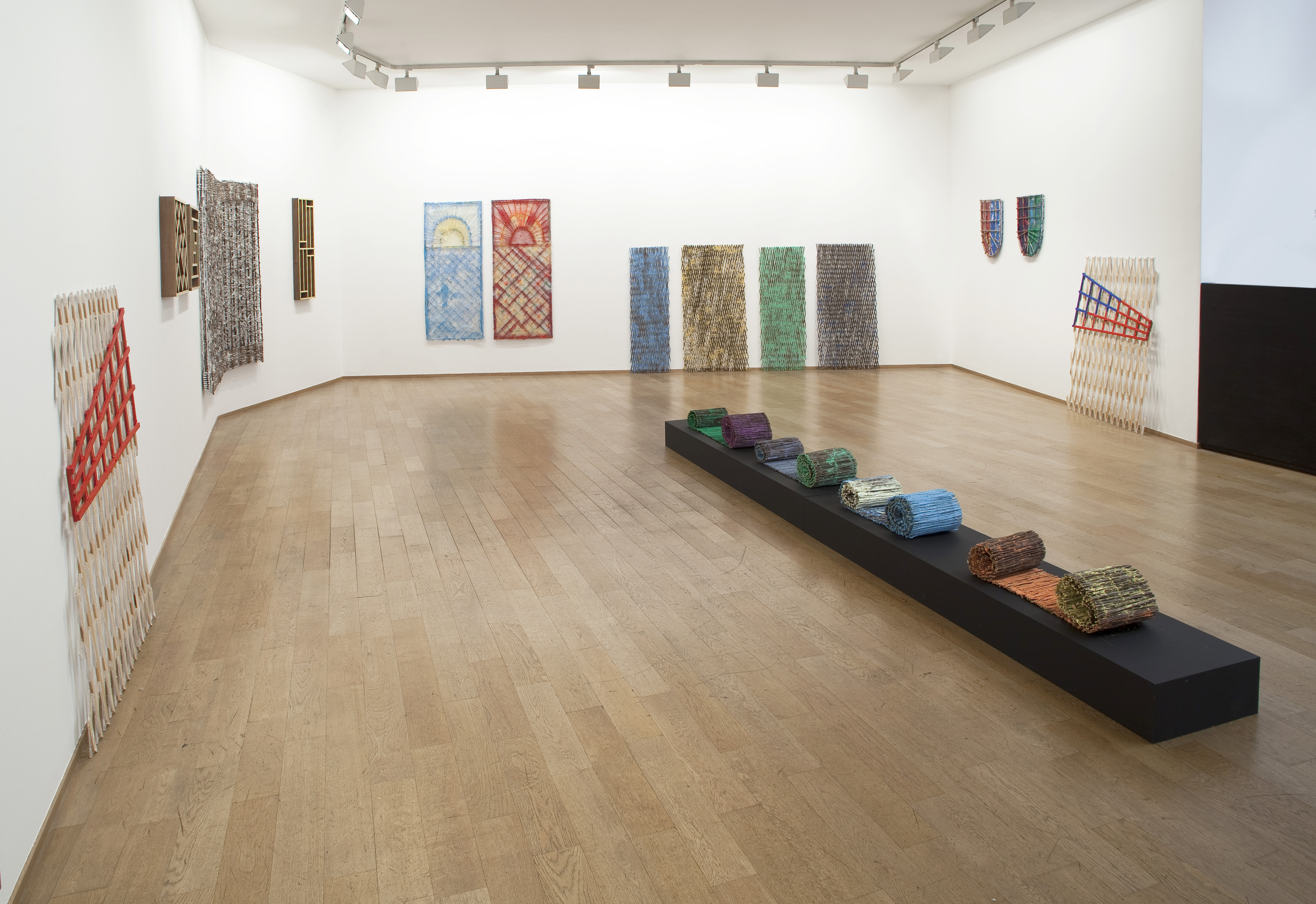
Daniel Dezeuze
Battements, chemins
Daniel Dezeuze’s latest exhibition at Galerie Templon, Battements, chemins, explores new aesthetic paths inspired by Chinese philosophy. The battements (beats) evoke the beating of the heart, with its alternating diastole and systole cycle, and the entire exhibition is imbued with a Ying-Yang duality.
A founding member of the Supports/Surfaces group in the 1970s, Daniel Dezeuze has spent forty years exploring and questioning the concepts that underpin painting, galleries and space. The artist appropriates a wide variety of techniques, offering a reinterpretation of American art, both abstract and minimalist, while constantly experimenting with what are seen as basic materials: net, metal gauze, wood, fabric and metal.
This new work positions Daniel Dezeuze as the creator of a new universe. Here, he is presenting us with its preliminary matrix: the Tao, the underlying force that runs through all things, both living and inert. “The Tao-taillis evoke density, interweaving, turbulence. The Icons, on the other hand, suggest a geometric vision. My aim is not to demonstrate a method but to open up new paths.”
In his Tsimtsoum series, featuring pieces in intertwined wood that shift between expansion and retraction, the artist refers to the teachings of Kabbalah and the process preceding the creation of the world according to Jewish tradition: God withdrew to allow the existence of a reality outside himself and to create the world. The Ailes de papillons series, on the other hand, moves between colour saturation and delicately applied tones to conjure up the life contained in the fluttering of a butterfly’s wings. Forms, choice of materials, order and disorder are all keys for unlocking the mysteries of these visual allegories, patterned with light and space.
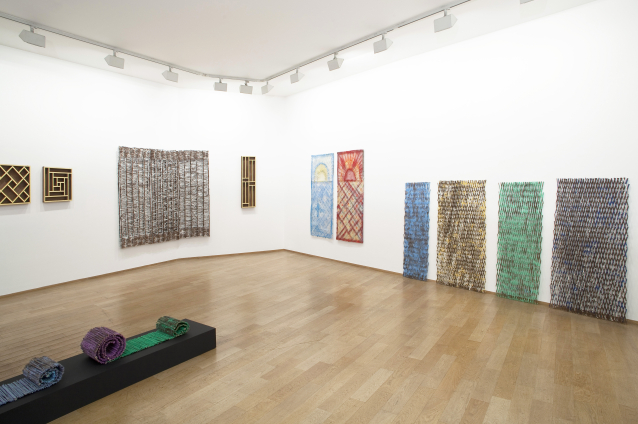
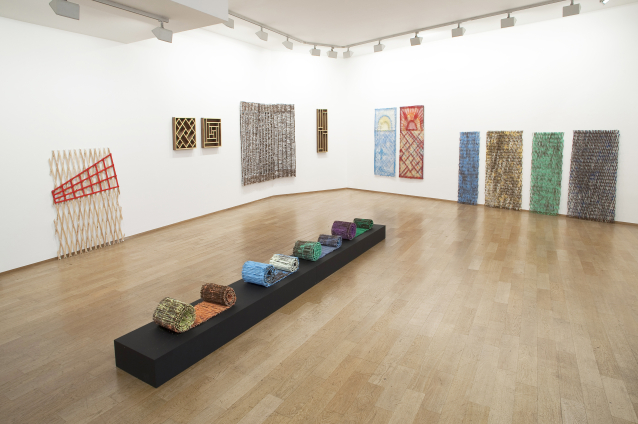
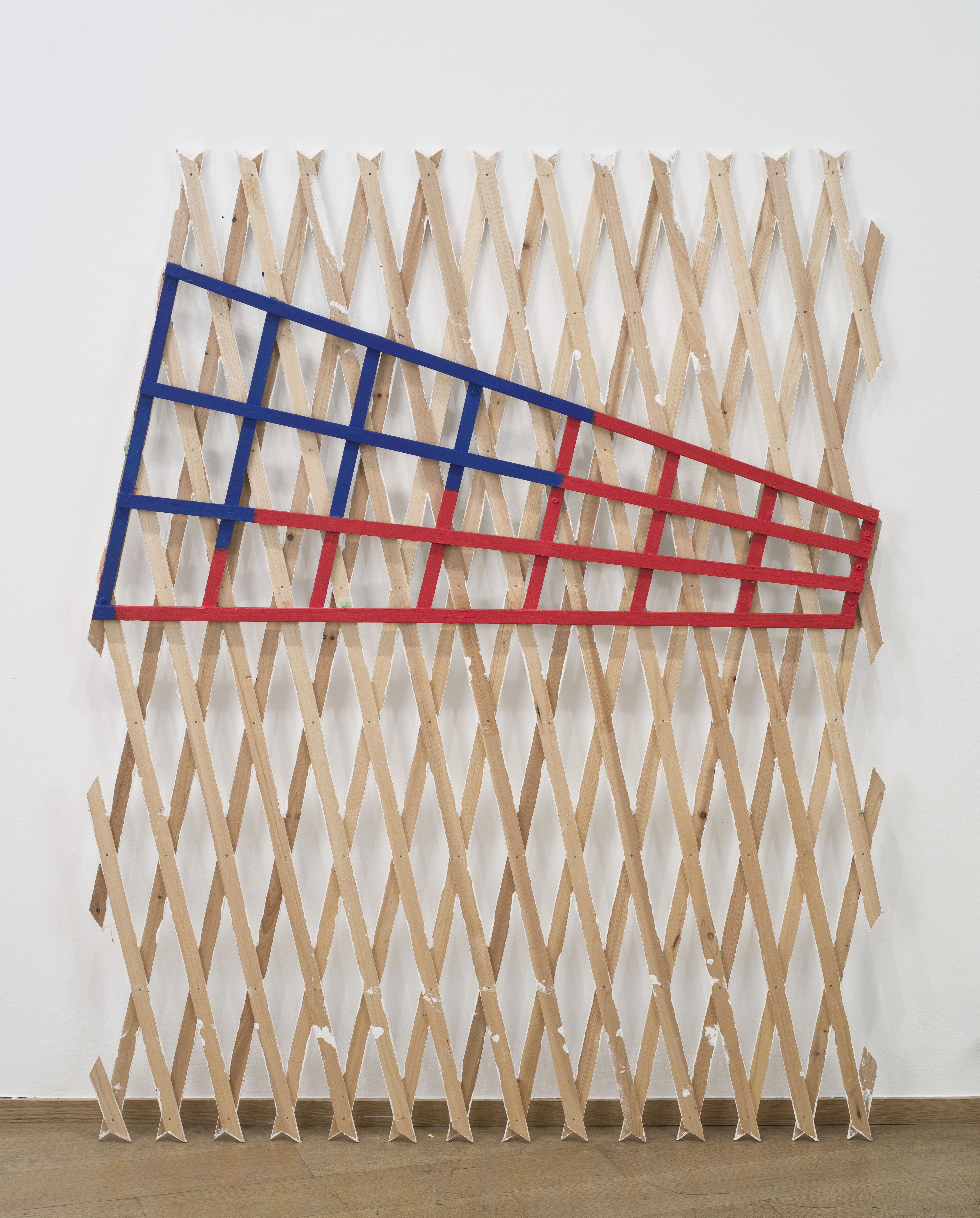
The artist
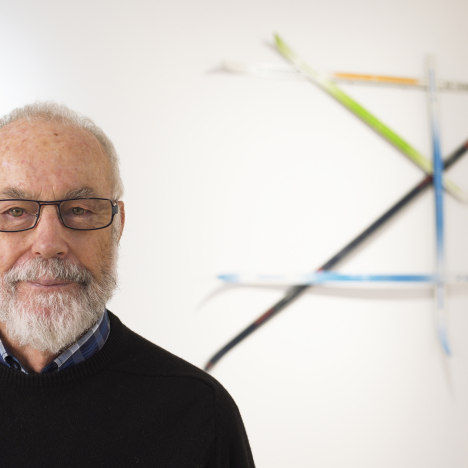
Born in 1942 in Alès, France, Daniel Dezeuze was one of the founding members of the Supports/Surfaces group in the 1970s. His work seeks to explore and question the concepts that underpin painting, galleries and space. The artist appropriates a wide variety of techniques, offering a reinterpretation of American art, both abstract and minimalist, while constantly experimenting with what are seen as basic materials: net, metal gauze, wood, fabric and metal.

